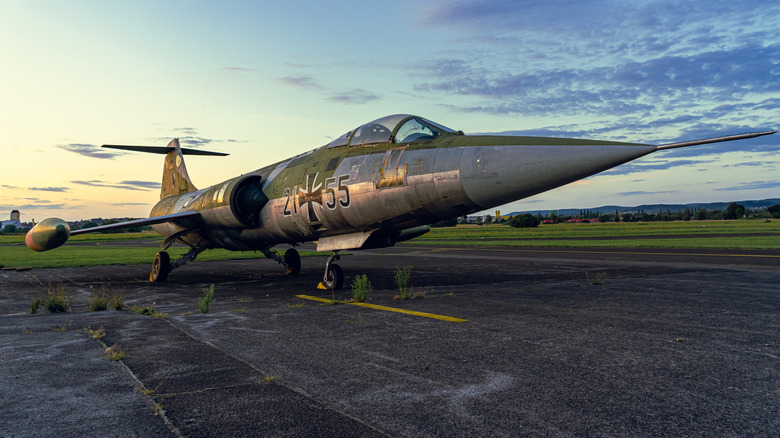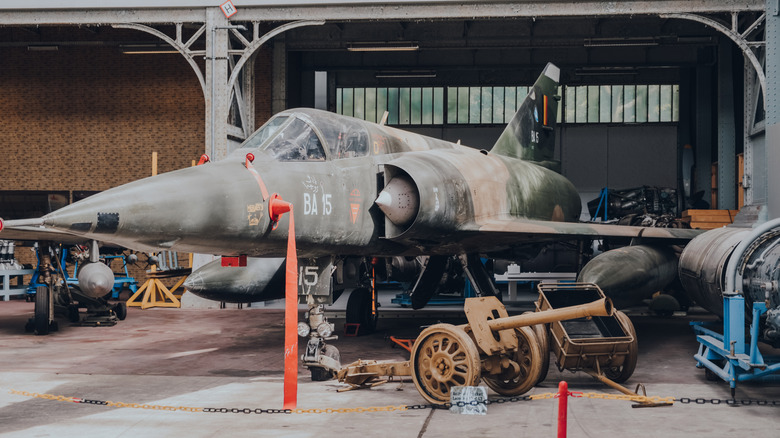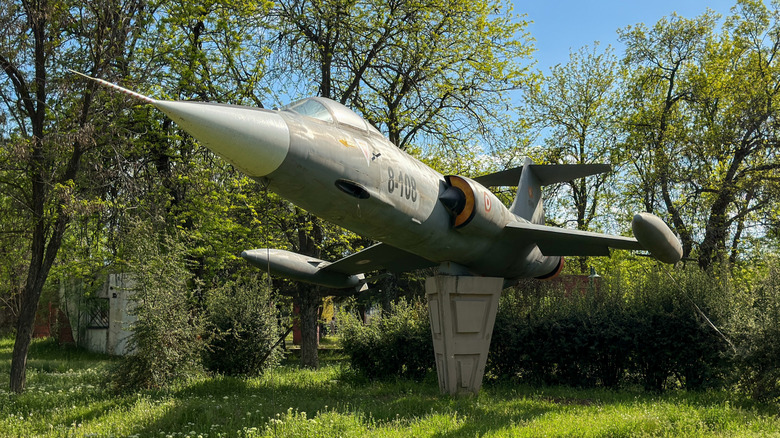Why Does The F-104 Starfighter Make A Howling Sound?
When Lockheed's F-104 Starfighter blasts through the sky, it doesn't just fly fast, it howls. Pilots, ground crews, and aviation fans have heard the eerie, piercing sound of the aircraft's engine. Some have actually compared it to the scream of an injured banshee, if that helps you imagine it better. It was one of the most iconic features of this Cold War-era interceptor. The Starfighter's howl wasn't simply a byproduct of high performance. So where did the sound come from? The answer lies in the engineering of its engine, the physics of airflow, and the strange, boundary-pushing design of the aircraft itself.
It's all thanks to the plane's General Electric J79 turbojet engine. As one of the first jet engines designed for sustained supersonic flight, the J79 was a marvel of its time. It was compact, powerful, and capable of producing as much as 14,800 pounds of thrust. As such, when the F-104 throttle moved beyond 82% power, the engine's variable-area exhaust nozzles began to constrict. This altered the frequency and behavior of the sound waves exiting the tailpipe. Hence, the infamous howling sound .
History behind the F-104 Starfighter and its nickname
This phenomenon is somewhat similar to the Venturi effect, blowing across the top of a glass bottle. In this case, the internal bypass flaps and shifting fuel jets create an unstable airflow pattern inside the tail cone. Interestingly enough, the howling sound can happen both in flight and while the aircraft is still on the tarmac. The howl was so distinctive that it earned the plane the nickname "Howling Howland."
Beyond being an obvious reference to the noise it makes, the affectionate term could also be a reference to Dr. W. L. Howland, a prominent flight test engineer who played a key role in the Starfighter's early development. Dr. Howland was heavily involved in the five-year Phase One flight testing program and is credited with helping refine the aircraft's aerodynamics and control systems.
The Howling Howland name could also be partially inspired by a character from a 1950s comic strip named Howland Owl, a bookish know-it-all who may have reminded flight crews of the engineers who worked on the aircraft's systems.)
Small plane, enormous sound
It goes without saying that the howling noise is merely a byproduct of the plane's radical design. However, it would eventually become a defining feature of the F-104. Back in the early 1950s, it was unlike any jet that came before it. With a wingspan of just under 22 feet and ultra-thin wings at a negative dihedral angle, it definitely looked more like a missile than a traditional fighter jet.
The J79 engine took up more than half the aircraft's total length. Being so compact not only helped boost speed and climbing performance but also made the engine's signature howl all the more prominent. There was simply much less material (and a far shorter distance between the jet's core and the exterior) to muffle its sounds.
Though it was retired from U.S. service by the mid-1970s, the F-104 remained in operation with European militaries for decades. In every setting, its howl remained unmistakable. While today's fighter jets have their own signature sounds, few, if any, are as uniquely piercing as the F-104's shriek.


